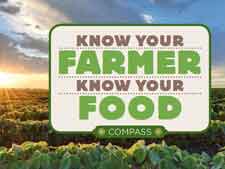On July 17, the USDA’s three-year-old outreach project “Know Your Farmer, Know Your Food Compass” underwent a transformation that makes the website more useful for consumers.
The “Compass,” as staff calls it, was created in 2009, when the USDA asked all departments to share their local food projects in one place.
“We realized we were sitting on a gold mine of information but it was insane to work your way through it. So the Compass pulls from every single corner, from the Forest Service to Ag to Marketing to Food Safety,” said Wendy Wasserman, USDA communications specialist.
Earlier versions of the website presented information in two ways: narratives that talk about USDA efforts to support regional food and a map that shows down-to-the-penny how much the USDA is spending on specific projects around the country.
“It allowed us to get a grip on what grants are being made. You can see how much your farmer invovled in the local food scene is getting. It was a big deal because it was the first time the USDA had done that,” Wasserman said.
Clicking on a project on the map brings up a pop-up box that describes the project, the goal, and the amount of money the USDA is spending on it. Farmers and farmers market organizers can then click through to learn more about grant opportunities. That old version of the Compass was a great place for farmers, activists, reporters and business planners who were looking for funding. But while the narratives are interesting, it wasn’t a great place for consumers who are just looking for food or local farmers from which to buy.
That changed on July 17, when the Compass added narratives about gardens and farmers’ markets, and a map of farmers markets.
Wasserman hopes that the Compass helps the public understand where tax dollars are going, and feeds the need for food knowledge — and food — at the same time.
“The Compass demonstrates that there is a commitment to local food systems across the country,” Wasserman added.
Speaking of farmer grants: The video playlist below showcases a small sample of farmers who have received SARE USDA Farmer and Rancher Grants to perform leading-edge, sustainably-focused work across a variety of farm type operations.

